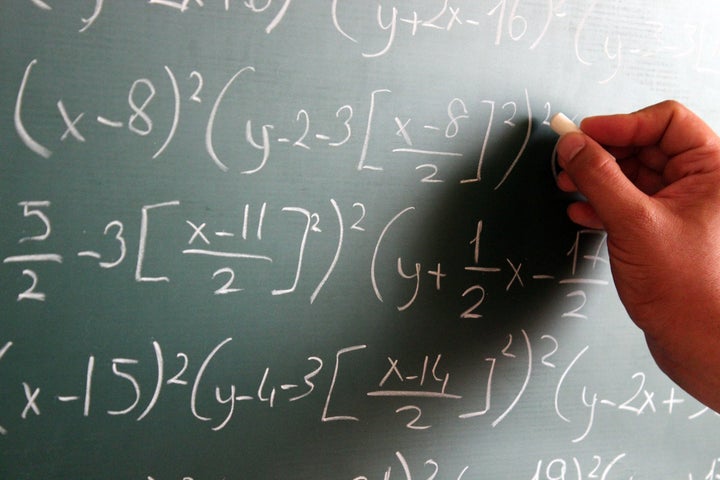
Since 1995, Stanford mathematician Keith Devlin has intrigued (and occasionally baffled) listeners to NPR’s popular Saturday morning magazine program ‘Weekend Edition’ with Scott Simon, with his discussions of mathematical topics that somehow manage to find their way into the news. It all started by chance (mostly).
As a young mathematics graduate student at the University of Bristol in my native England, back at the end of the 1960s, my role models were the mathematicians who had made major mathematical discoveries—mathematical giants such as Leonard Euler, Karl Friedrich Gauss, Pierre De Fermat, and Kurt Gödel. Like many young people starting out on a mathematical career, I dreamt of joining the ranks of the greatest—of proving a major theorem or solving a difficult problem that had baffled the best minds for decades.
Some of my contemporaries succeeded. In 1963, only a few years ahead of me, the young American mathematician Paul Cohen solved Cantor’s Continuum Problem, a puzzle that had resisted all attempts at resolution for over sixty years. But as happens to the vast majority of mathematicians, eventually I had to settle for far less.
During the course of my career, like most of the world’s 25,000 professional mathematicians listed in the International Directory of Mathematicians, I solved a number of minor problems and proved several respectable, but largely unremarkable theorems. I taught at various universities, in Scotland, Norway, Germany, Canada, and the United States (where I moved permanently in 1987), and I wrote a number of textbooks for mathematicians and students. Again, fairly typical career moves for many academic mathematicians, though perhaps I moved around more than many and ended up writing more books than most.
But along the way, almost by accident, I discovered another talent, perhaps my true calling: an ability to explain often obscure, advanced mathematical ideas to a general audience. I found that, through my words, I could make mathematics come alive for others not versed in the subject.
“I found that, through my words, I could make mathematics come alive for others not versed in the subject.”
It was an unplanned sequence of events that resulted in my pursuing a second career path as a public expositor of mathematics. In the early 1980s, I grew increasingly frustrated by the fact that magazines and newspapers often carried articles on science—biology, physics, chemistry, and so on—but hardly ever on mathematics. On the few occasions when they did cover mathematics, they did so badly, often getting the main idea entirely wrong. In March 1983, I decided to do something about the situation, and wrote a short piece and sent it in to the British national newspaper The Guardian.
A few days later, the science editor phoned and informed me that they could not publish it. “But,” he said, “I like your style. You seem to have a real knack for explaining difficult ideas in a way ordinary people can understand.” He encouraged me to try again, and my second attempt was published in The Guardian on May 12, 1983. Several more pieces also made it into print, eliciting some appreciative letters to the editor. As a result, when The Guardian launched a weekly, personal computing page later that year, it included my new, twice-monthly column Micromaths. The column ran without interruption until 1989, when my two-year visit to Stanford University in California turned into a permanent move to the US.
I soon discovered that I liked my new found role of “expositor”. I have always been passionately interested in all aspects of mathematics, and never liked the fact that so many people have a completely false impression of this wonderful subject. Most people think that mathematics is just about numbers, but that’s not true at all. Yes, numbers play an important role in the subject, but mathematics is not about counting. It’s about pattern and structure. It’s about the hidden beauty that lies just beneath the surface of the everyday world. I relished the challenge of constantly trying to find ways to explain new developments in advanced mathematics to the lay readers of my column. The frequent appreciative—and occasionally baffled—letters I received from readers fueled my commitment even more.
Encouraged by the success of my column, I began writing books and articles for a general readership, including some for the business world. I also gave lectures to lay audiences, and started to make occasional appearances on radio and television. From 1991 to 1997, after moving to the United States in 1987, I edited FOCUS, the monthly magazine of the Mathematical Association of America, and since January 1996 I have written a monthly column, Devlin’s Angle, for the association.
Early in 1995, I got the break that led to my becoming a regular contributor to primetime national radio in the US, with the media identity “the Math Guy”. I got a telephone call one day from National Public Radio’s Saturday morning news magazine show Weekend Edition. The host, Scott Simon, wanted to interview me about the solution to the 350-year-old problem known as Fermat’s Last Theorem, which became a major news story after the Princeton mathematician Andrew Wiles had solved it a few months earlier. Never one to say “no” to a new challenge, I trotted off to my local NPR affiliate studio to record the segment.
Although Scott and I would not meet for many months—then as now we record most of our interviews with me in a studio in California and Scott at the NPR studios in Washington D.C.—we hit it off immediately over the air. Listeners loved our intimate, humorous banter—which from the start has been completely unrehearsed and spontaneous. Many wrote in to the program to say so. Again, without any planning, I found I had another new role, this time a “radio personality,” appearing on the show every few weeks. Eventually, I acquired my “stage name.” The receptionist at the studio I used soon started to greet my arrival with “It’s the math guy.” I mentioned this to the Weekend Edition producer one day, and he replied, “Oh, that’s what we put you down as on our scheduling board.” And so the NPR Math Guy was born.
This post is adapted from the introduction of Keith Devlin’s new book Finding Fibonacci: The Quest to Rediscover the Forgotten Mathematical Genius Who Changed the World, published this month by Princeton University Press. His Math Guy segments, 94 to date, are all available at The Math Guy Sound Archive.
